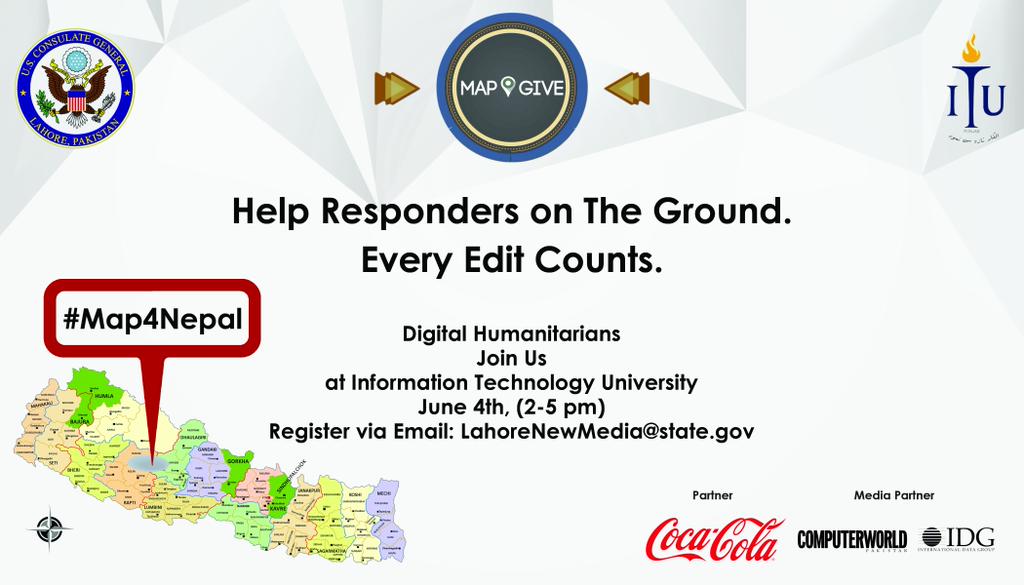Form Partnerships

A successful MapGive engagement often depends on gathering the right group of partners. At the core, OpenStreetMap (OSM) is a collaborative effort, and shared responsibility for making the map is the cornerstone of the community. Sure, it’s entirely possible for one person to do everything required to prepare a MapGive event, but it will be a whole lot easier to find some help. The MapGive team can help think through good possible partners, and in some cases, reach out through our network for connections.
Here are key roles for MapGive. These are, of course, flexible depending on the scale of the engagement, and the detals of the local context.
OpenStreetMap Community
In nearly every spot on the globe, there are enthusiastic OSM mappers. They may be part of an established and active community, or have taken part in an organized project. In some cases, may have been mapping entirely on their own. These folks will be very interested to get involved. They have the technical knowledge and can teach others how to start with OSM.
There are lots of ways OSM communities organize, and it’s not always easy to find them. They could be on mailing lists, Facebook groups, or only connecting in OSM itself. The MapGive team is very familiar with this network, and can help you find the OSM community in your locality.
The community includes many other institutions, as well. Other USG agencies, like USAID and Peace Corps, work with OSM and may be active in your country. They may be interested to be involved in anything from advice and connections, to partnering in holding an event. Internaional organizations like the World Bank, Red Cross, and several UN agencies, similarly engage with OSM in many places and in many ways.
Venue
A welcoming, exciting venue can make an event. Events can take place inside the Embassy; or outside through existing partnership through programs like American Spaces, or with new outreach. Typical places are public buildings of government or civic organizations; universities, libraries, and other educational institutions; or commercial partners. The venue host will likely be able to reach out through their own network to assist in publicizing the event and be involved in other aspects of logistics.
Mapping Applications
OSM is used for many high impact, public good needs. MapGive focuses humanitarian response and development applications; but there are myriad other applications and ideas that benefit from better mapping data (e.g. bus routes, waste management, navigation).
A partnership with an organization in need of mapping data sharpens the drive of participants. These could be everything from international organizations already working with OSM, with existing projects in the Tasking Manager, to local NGOs working on topics of high priority for the embassy.
Education
Learning environments are ideal partners for both short and longer term MapGive engagements. Students are eager to learn new skills, contribute solutions to real problems, and make connections beyond their school. Instructors want to develop engaging learning experiences. Schools are often the site of OSM events and projects, and students make up a large portion of volunteers. Instructors and experienced students can have technical expertise, and may already be part of the OSM community.
TeachOSM is a good network to reach through for curriculum and connections.
Sponsors
There may be small expenses, like refreshments during an event, or covering the cost for an internet connection, etc. A sponsor can help pick up these expenses, in exchange for association with the event. This may be an easier process than procurement.
Media
A media partner may be interested to help amplify a MapGive engagement, and cover and document any events in more detail.